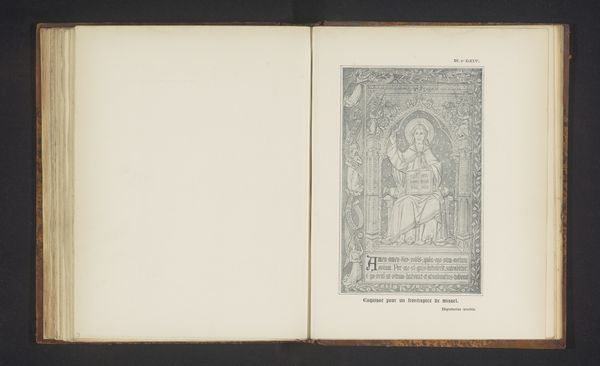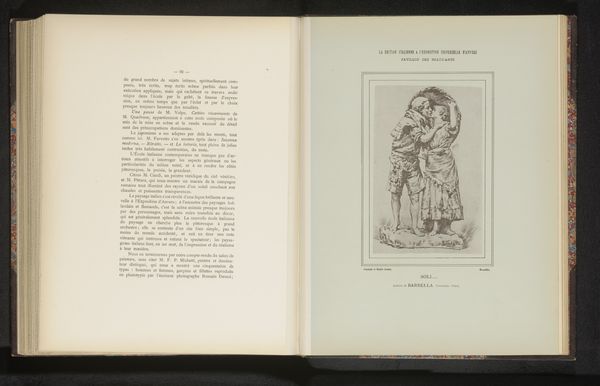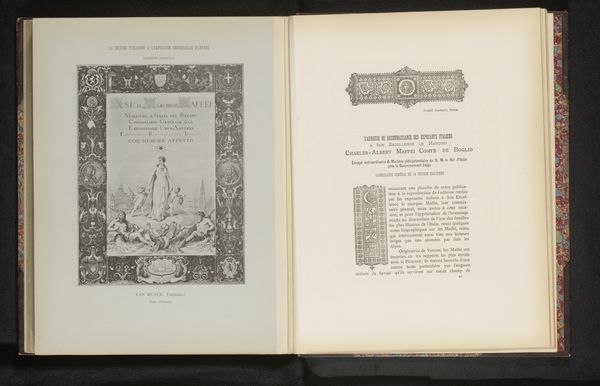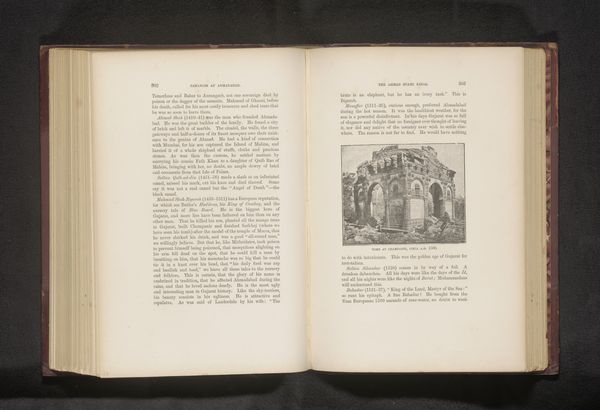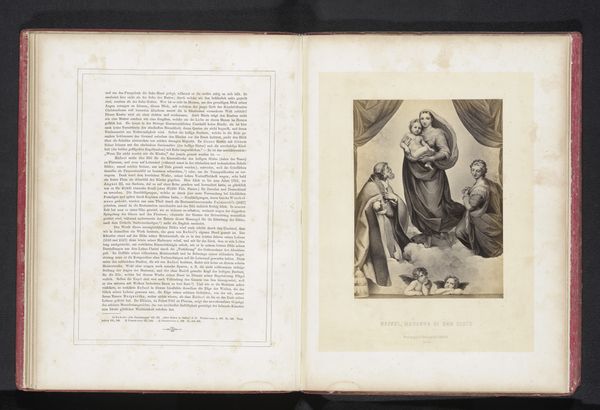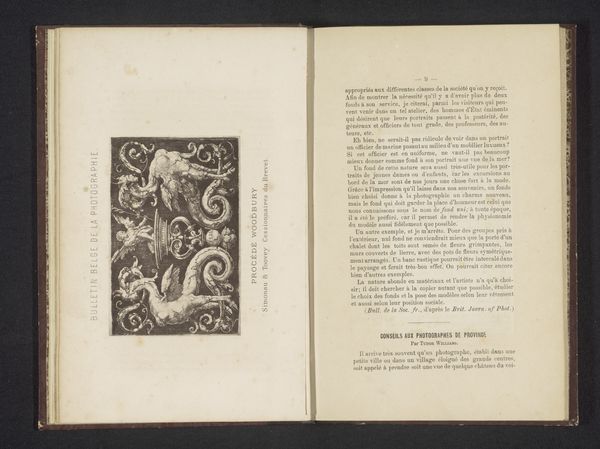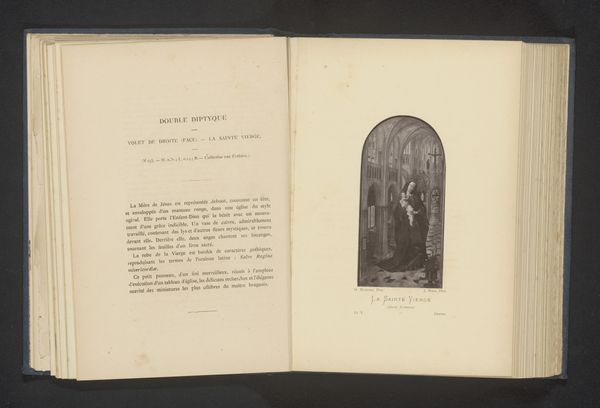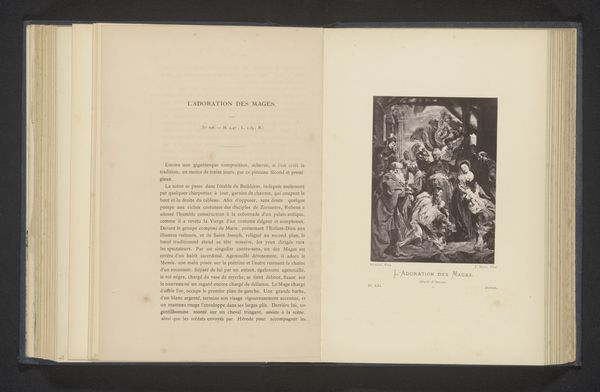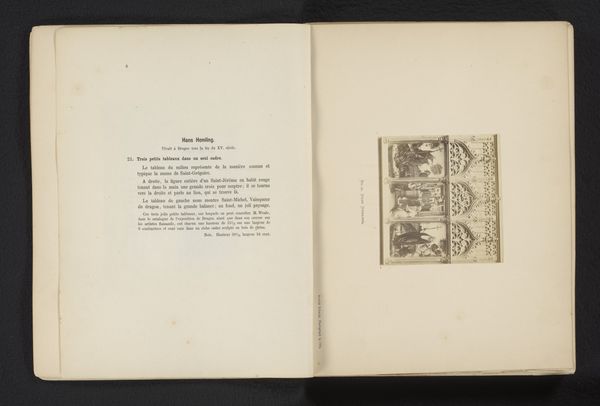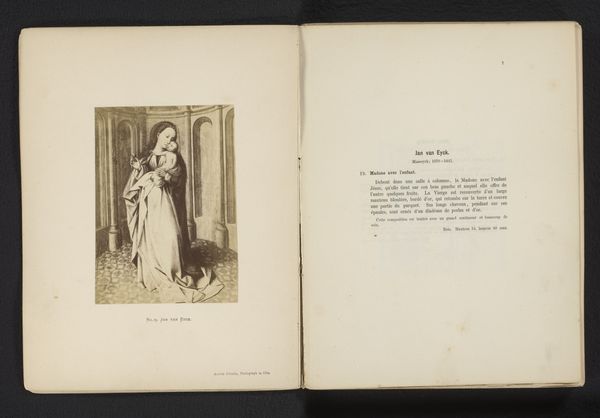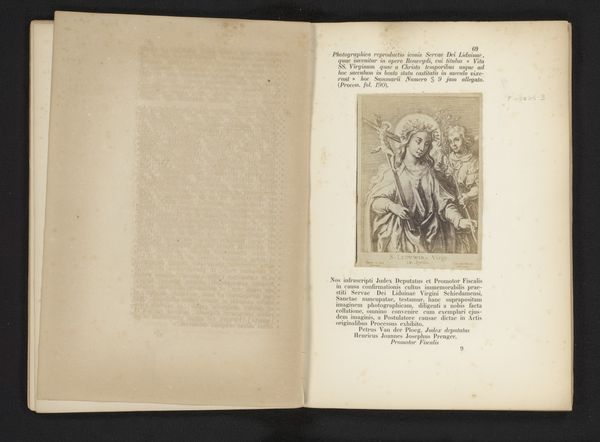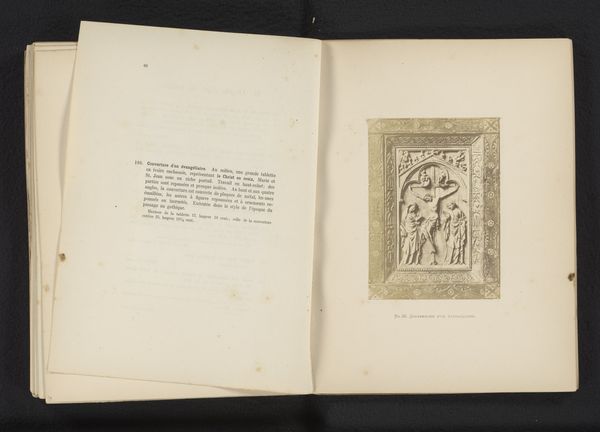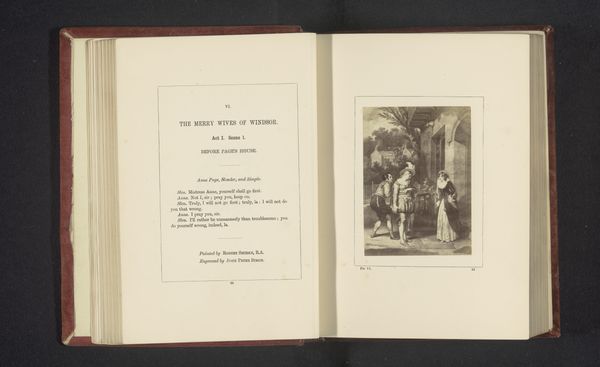
tempera, print, oil-paint, photography
#
portrait
#
medieval
#
tempera
# print
#
oil-paint
#
photography
#
history-painting
Dimensions: height 141 mm, width 97 mm
Copyright: Rijks Museum: Open Domain
This photogravure was made by Anselm Schmitz around 1886. Schmitz's print captures a painting, and in doing so, transforms it. The original artist would have worked with brushes and pigments, building up layers of color and texture, whereas Schmitz used a camera and etching plate to create this reproduction. The photogravure process involves coating a copper plate with a light-sensitive gelatin tissue, exposing it to a photographic negative, and then etching the plate with acid. The depth of the etching determines the amount of ink that the plate holds, and therefore the darkness of the print. This was a relatively new technology at the time, and allowed for the mass production of images, making art more accessible to a wider audience. However, it also raises questions about authenticity and originality, and the role of labor in the production of art. Schmitz's photogravure is not just a reproduction of a painting, it is an object in its own right, with its own unique qualities and history.
Comments
No comments
Be the first to comment and join the conversation on the ultimate creative platform.
